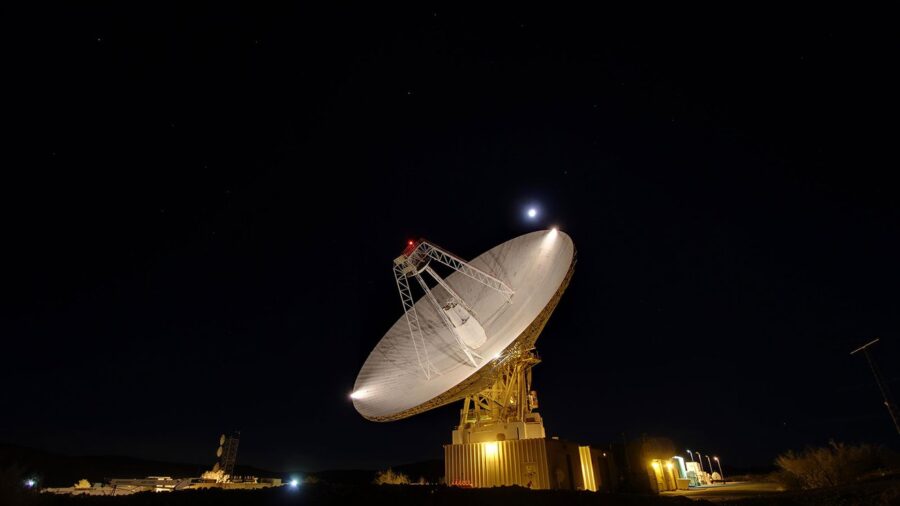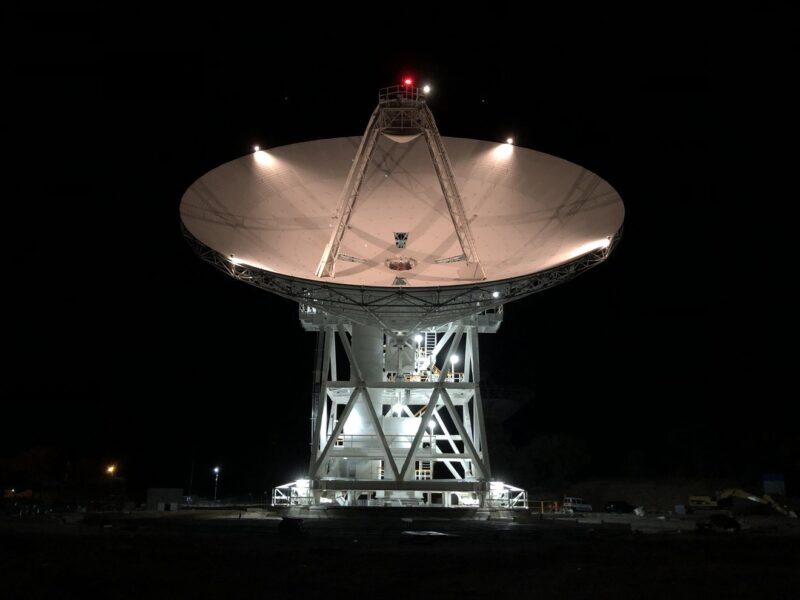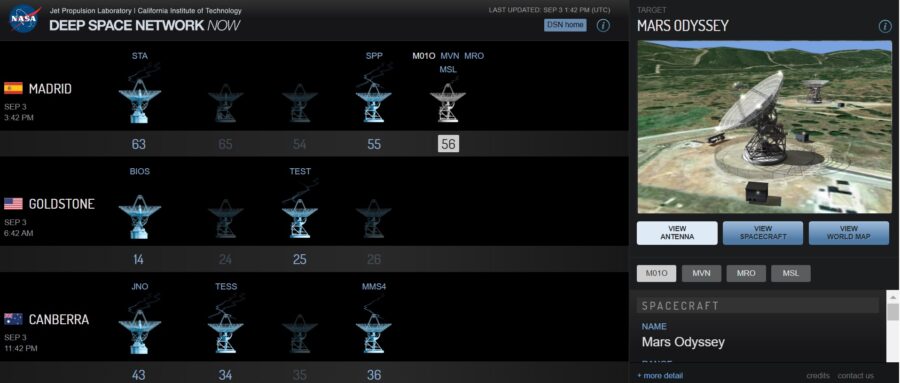NASA is upgrading its Deep Space Network to keep up with the demands of modern interplanetary communications.

NASA / JPL-Caltech
A key piece of interplanetary communications infrastructure is getting an overhaul. NASA recently revealed how its venerable worldwide Deep Space Network (DSN) is upgrading as more missions depart for points across the solar system, and how it will keep communications running in the future.
Established in 1963 at the beginning of the Apollo era, the DSN is made up of three sites, offering worldwide coverage: outside Madrid, Spain; Goldstone, outside of Barstow California; and the only southern hemisphere site, in Canberra, Australia. If a spacecraft is anywhere in the solar system beyond Earth, it's almost always in view of at least one DSN site.
Each site is actually a collection of several radio antennas: one main 70-meter dish in Goldstone, three 34-meter dishes in Canberra and Goldstone, and four smaller dishes at Madrid.

NASA
Generally, the DSN is supporting 39 missions across the solar system at any given time, with an additional 30 missions in the development pipeline. As missions fly farther afield, data rates come at a premium: For example, typical data rates from Mars run at an average of 500 to 32,000 bits per second, roughly half as fast as a standard home modem. New Horizons had to relay data at a miserly 1,000 bits a second after its 2019 flyby of Arrokoth.
“Capacity is a big pressure, and our antenna-enhancement program is going to help that out,” says DSN Deputy Director Michael Levesque (JPL) in a recent press release. “This includes the building of two new antennas, increasing our number from 12 to 14.”
One new 34-meter dish (DSS-56) went operational at Madrid in January 2021. The dish is an ‘all-in-one’ receiver and transmitter, capable of spanning the full range of communications frequencies, rather than only talking to missions allocated to specific frequencies as in the past. This ability is specific to the new 34-meter dishes.
The team also completed upgrades of the massive 70-meter dish at Canberra, the only receiver currently capable of talking to the Voyager 2 spacecraft, now more than 127 astronomical units (a.u.) from the Sun in the direction of the southern hemisphere constellation Pavo, the Peacock.

NASA / JPL-Caltech
Next up are planned upgrades for the main Madrid and Goldstone receivers. These newer systems can handle multiple signals on one antenna and split them with a digital receiver, a handy capability for tracking, say, multiple missions at Mars.
New approaches have also streamlined resources available to the DSN as well. For example, in the past, each site tended to operate locally; now, the DSN operates under a “follow the Sun” mantra, where the day shift at each site controls the entire network, in a perpetual globe-spanning hand off.
“Each site works with other sites, not just during handover periods, but also on maintenance and how antennas are performing on any given day,” Levesque says. “We’ve really turned into a globally operating network.”
Future missions may also feature other types of communications. For example, NASA has tested optical laser line-of-sight communications on the LADEE lunar orbiter mission in 2014 and is planning several additional missions to test infrared laser relays.
Often, the very first indication we get that a Mars lander is alive and well is from the DSN, which you can follow live online.

NASA
It's great to see the iconic large Deep Space Network dishes that guided Apollo crews to the Moon and back carry on guiding spacecraft, rovers, and eventually humans through the solar system.
 3
3









Comments
Andrew James
September 6, 2021 at 8:05 pm
This is interesting story on America's DSN because the upgrade more political than the increase in interplanetary space traffic. In my mind is more to do with China and Russia and their parallel desire for human lunar missions to explore or exploit or Mars. It seems that each country has its own independent tracking system which are based in select countries e.g. In South America for China is the Chinese Academy of Sciences South America Center for Astronomy (CASSACA) in Chile in controlled by the CNSA, since 2019 the Espacio Lejano Station in Argentina, and the African Swakopmund Tracking Station in Namibia. These are also is being upgraded.
The political divide with all these different tracking stations may have to be strategically befriended against military attacks, because is just one site is taken out, communications with that country's assets would be extremely affected. Whilst interplanetary studies by spacecraft are collective useful for all humanity and pose no threat, the obtaining mineral resources from either asteroids or the Moon do pose a threat. Most of the media on the story are missing the point.
It is a pity that the US led Spacecraft Tracking and Data (Acquisition) Network (STADAN or STDN) in the 60s was designed to be globally shared network for all missions, under the umbrella of an equalitarian international Space Treaty, only see slowly replaced by petty nationalistic self-interest - where the networks like some kind of demesne loaned out to tenants.
IMO, DSN Networks will be eventually replaced by orbiting radio telescopes or on the Moon using crater walls.
You must be logged in to post a comment.
John-Murrell
September 10, 2021 at 5:06 pm
The European Space Agency have their own network and I presume other space nations have ones as well. The UK have a small station in Cornwall that is being refurbished as it is no longer required for Telecoms satellites.
You must be logged in to post a comment.
Lariliss
October 1, 2021 at 10:11 am
With all the efficiency enhancement, spotlighted cooperation makes it even more optimistic!
The resulting cost savings have been fed into antenna enhancements, and the effort has also strengthened the international cooperation between the complexes. “Each site works with the other sites, not just during handover periods, but also on maintenance and how antennas are performing on any given day. We’ve really turned into a globally operating network,” said Levesque.
You must be logged in to post a comment.
You must be logged in to post a comment.